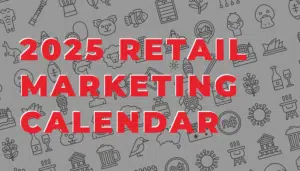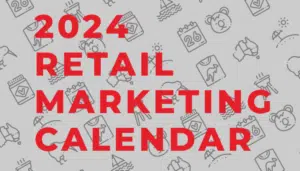If there’s one thing synonymous with Marketers, it’s their ability to make and close a sale. Of the many ways Marketers may choose to engage with customers, one of the most traditional methods is cold calling. Tried and tested for cold calling remains to be one of the most cost effective and convenient ways of reaching customers.
However, with the digital revolution and technological advancements, there have been several new kinds of Marketing techniques that have risen in the industry. Digital marketing, social media marketing, paid search, promotional videos, influencer marketing, and so on. With these new methods, many marketers are beginning to consider cold calling to be rather obsolete, and no longer relevant. An interview conducted to ask 10 sales experts what they thought about cold calling found similar results. 7 out of 10 remarked that cold calling was not nearly as effective at acquiring leads versus digital marketing. Comparisons were made about conversion rates and ability to gather insight about the customer, concluding with disregard for cold calling.
So is there any truth to this? Is cold calling still relevant in 2020? Or is it an ancient marketing technique that ought to be forgotten? Prepare to be surprised. In this article, we’ve outlined why cold calling is effective, why it still works and 10 stats proving our point. By the end of this article, you’ll be convinced that cold calling is crucial to see results.

What is Cold calling?
Cold calling is a Marketing technique that involves salespeople calling prospective customers to pitch their product or service. The ‘cold’ in cold calling refers to new customers who haven’t previously been contacted by the company. The goal of a cold calling campaign is to not only inform prospects about the product/service, but to interest them in making a purchase.
Typically, a cold call can run along the lines of:
- The salesperson greeting the customer and building rapport
- Informing the customer about the product or service
- Identifying the customer’s needs
- Addressing the needs using the product or service
- Closing the sale or promising to follow up
Not all customers end up agreeing to make a purchase after the first cold call. However, upon showing interest, the salesperson may record this customer as a ‘lead’. Leads are important for telemarketers because they’re the ones who require follow up calls to secure a purchase. Calling leads as a follow up to seek additional information is known as warm calling.
Why is Cold calling still relevant?
Cold calling is still relevant and effective for a number of reasons, such as:
- Cheap & easy: Cold calling is one of the easiest-to-implement forms of marketing. The only thing you really need to setup your cold calling campaign is a high performance script. Don’t know where to get one? We’ve laid out the best cold calling scripts that work for ANY situation in this ebook. Grab your copy here
- Prospect analysis: With cold calling, the salesperson can analyse for signs of interest sooner than other forms of marketing. With other mediums such as digital marketing or email marketing, there is little to no personal engagement. This make it difficult to gauge whether or not the prospect is interested in the product. With cold calling, verbal cues, language and tone can be used to understand whether the prospect is worth pursuing.
- Direct identification of needs: Similar to the previous advantage, personal engagement means the caller can identify what the prospect’s needs are by talking. This may not be possible through digital or email marketing, whether there is mostly one-way communication.

10 Figures that prove why Cold calling STILL works
Cold calling is often touted to be outdated. The naysayers typically point towards a low conversion rate or a comparison to other forms of marketing. However, if performed correctly, cold calling has the potential to reap serious benefits for a company. We’ve outlined 10 industry-backed statistics that showcase why cold calling works, and why you should be implementing it TODAY. Head on below:
1. Over 90% of customer interactions happen over the phone
The glory days of field sales work are slowly coming to an end. With Covid-19 invoking a new work-from-home culture, social distancing has become the new norm. Many companies are operating from their offices, with little to no in-person customer interaction. This is where cold calling comes in. According to a source, over 90% of customer interactions happen over the phone, making it lucrative to reach prospects. If you’re having trouble establishing the customer’s needs and wants through other channels of marketing, try cold calling.
2. Nearly 70% of buyers answer cold calls
Research by The Rain Group found that buyers’ reception towards cold calls was positive. Nearly 70% accept cold calls by companies to pitch their product/service. Additionally, 49% of buyers claimed that they prefer phone calls as the first point of contact. A number high than direct mail, presentations/seminars, LinkedIn and text messaging.
3. 82% of buyers have accepted meetings after a cold call
Once again, the personal interaction feature of cold calling allows salespeople to build rapport and identify common areas of interest. This statistic indicates that over 80% of buyers agreed to meet with salespeople after a series of contacts that started with a phone call. In practice, this essentially means that if the salesperson is effective at building rapport, establishing customer needs and providing relevant solutions, a lead conversion and a meeting is highly probable.

4. Cold calling outreach has a response conversion rate of 8.2%
According to a study, cold calling outreach had an overall response conversion rate of 8.2%, compared to just 0.03% of cold emailing. This was supported by insight from a psychology professor, who remarked the effectiveness of real life communication versus online text based interaction. He stated that 7% of a message relies on words, 38% on intonation (pitch, voice and tone), and 55% on facial expressions or body language. These communication nuances are particularly easier to implement through a sales call, compared to a cold email.
5. Text messaging before cold calling reduces lead conversion by nearly 40%
Text messaging as the first point of interaction reduces the likelihood of connecting with a lead by 39%. This is because text messaging does not allow for personal interaction between the buyer and the seller. A text message that sounds incentivising is not enough to convince a customer, let alone convert them into a lead. Secondly, most smartphones these days are able to filter out marketing messages as spam. This further decreases the chances of the customer even opening or reading the message.
Sales calling in order to set up an initial relationship with the prospect is an ideal way to get things started. After this, text and promotional messaging to keep them within the loop can help increase the chances of lead conversion. Once the customer knows about your service offering, they would likely appreciate text reminders and promotional notifications from your company.
6. Cold emailing WITHOUT Cold calling was over 95% less effective
A 2018 research report found that cold emailing by itself, without a prior cold call lowered the effectiveness of making a sale by over 95%! The study revealed that utilising multiple methods of direct marketing such as cold calling and emailing together, helps improve the overall chances of securing a lead. This combination can be quite powerful if done the right way.

If you’ve started your outreach attempts with a cold call, following up on the effort with an email to the prospect is a great way to keep them interested. It also keeps your product/service fresh in their minds. Alternatively, an initial cold email followed by a phone call would increase the chance of the customer answering the call, since they would already be familiar with you and your company. Therefore, cold calling is even more effective when paired up with another method.
7. 51% of directors, and 57% of senior level executives prefer to be contacted by the phone
CEOs and Managing directors receive tons of email. As a result, your well-intentioned email marketing attempts may as well be ending up in the spam folder. Over 50% of managers and 57% of senior executives prefer to be contacted over the phone with regard to a new product. These individuals tend to be short on time, and prefer a caller who can efficiently address their needs quickly by informing them about the product or service.
However, it is important to note that these individuals do not have a lot of time for chit chat. Therefore, having the script to know exactly what to say and when, is crucial to ensure you keep them interested. In case you missed it, here is our copy of the best cold calling scripts for ANY situation.
8. 75% of online buyers want 2-4 phone calls before a company gives up
E-commerce has grown tenfold over the past few years or so. With Covid-19 resulting in companies adopting a work-from-culture, and people socially isolating, online shopping has increased by a significant margin. Of these, a study found that 75% claimed they would expect 2-4 phone calls before the company gives up. For a prospect, establishing a relationship with the company could potentially require more than one interaction. Having more than one phone call, or pairing it with an email is a great way to complete the sale.
9. Over 50% of high growth companies stated that cold calling is ‘very much alive’
These are companies that experienced a minimum of 40% growth over the previous 3 years in their industry. For a small to medium sized business that is looking to expand, cold calling is a steadfast way of growing out a customer base because of its low cost approach. This is another possible reason why these companies experienced 40% or more growth within a span of 3 years. By actively making sales calls to customers, these companies shortlisted prospective leads and saved heaps of time that other competitors would have spent identifying with trial and error.

10. Over 70% of customers prefer a specific marketing approach, rather than mass marketed methods
We’ve all been there. We write one template email, letter or script that we really like and stick with it. Ctrl + C and ctrl + v, that’s where we go with it for every customer we want to contact. However, customers can see through it! According to a source, 70% and more prefer a more tailored attempt. Customers know when a company uses a mass marketed approach to sell their product or service, and they don’t like it. This is often what happens with cold emailing as well, where a stock email template is mass marketed to hundreds of customers. Unfortunately, having a one-size-fits-all approach is not ideal here.
The Wrap…
Cold calling using the right script for the right customer at the right time, can do wonders for your business. It sets you apart from your competitors who are too lazy to put in the work. The customers have spoken, now it’s your turn.
Don’t know where to begin? In case you missed it, and grab a FREE copy of our cold calling scripts eBook here, that will help you navigate through ANY scenario you come across.
What is the difference between cold calling and warm calling?
Cold calling refers to the process of listing down prospective customers who you, or your company has never contacted before. The goal is to ‘cold call’ these individuals and tell them about your product or service, in the hope of converting them into a lead and get them interested.
Warm calling refers to calling people who you’ve already cold called before. Follow up calls to remind them about the product/service, or to inform them about new offers and discounts to keep them within the loop are all examples of warm calling.
For more information on the differences between the two, check out our blog here.
What are the benefits of Cold calling?
Not only is cold calling cheap and easy to implement, but it also allows for personal interaction with the customer. This is something that email marketing, text messaging and digital advertising do not have. By directly engaging with your customer, you have a better chance of explaining your product/service, answering questions and solving problems to fulfil your customers’ needs.
What do I need to start cold calling?
The most important piece of preparation needed before you start cold calling, is a high performance script. A strong script that has all the information on what to say and when to say it, is an immensely powerful tool that will help you see results from your campaign. Looking for a script? download our FREE cold calling eBook for access to high performance scripts designed for ANY situation here.
Once you have a script, all you need is a calling team, individuals who are not afraid of getting up-close with customers over the phone and pitching the product or service. From there on, may the force be with you.
Insil is a boutique Australian Marketing Agency, dedicated to providing customers with a holistic approach to Design Thinking and Marketing Services.
If you’re interested in generating more sales, increasing traffic and attracting higher quality leads, sign-up to receive a free, no-obligation strategy session TODAY.




